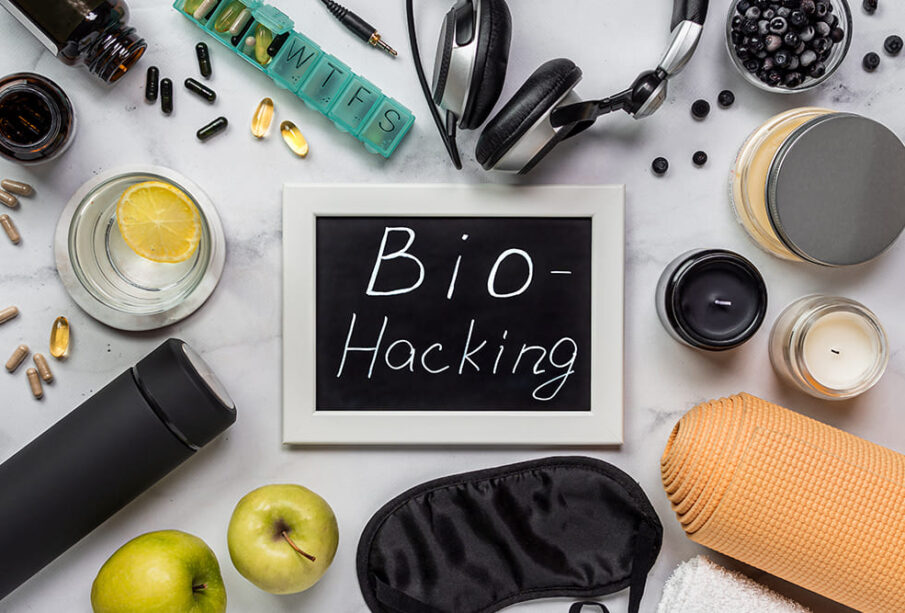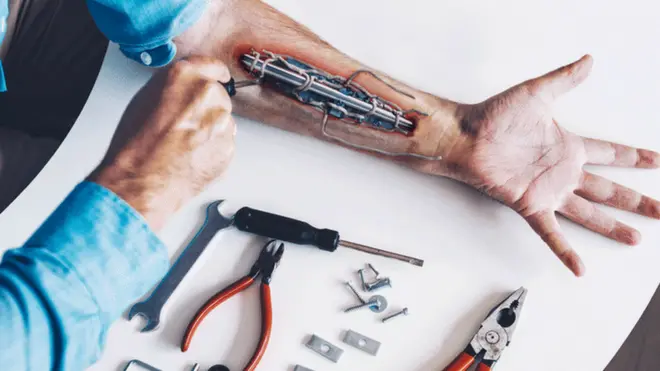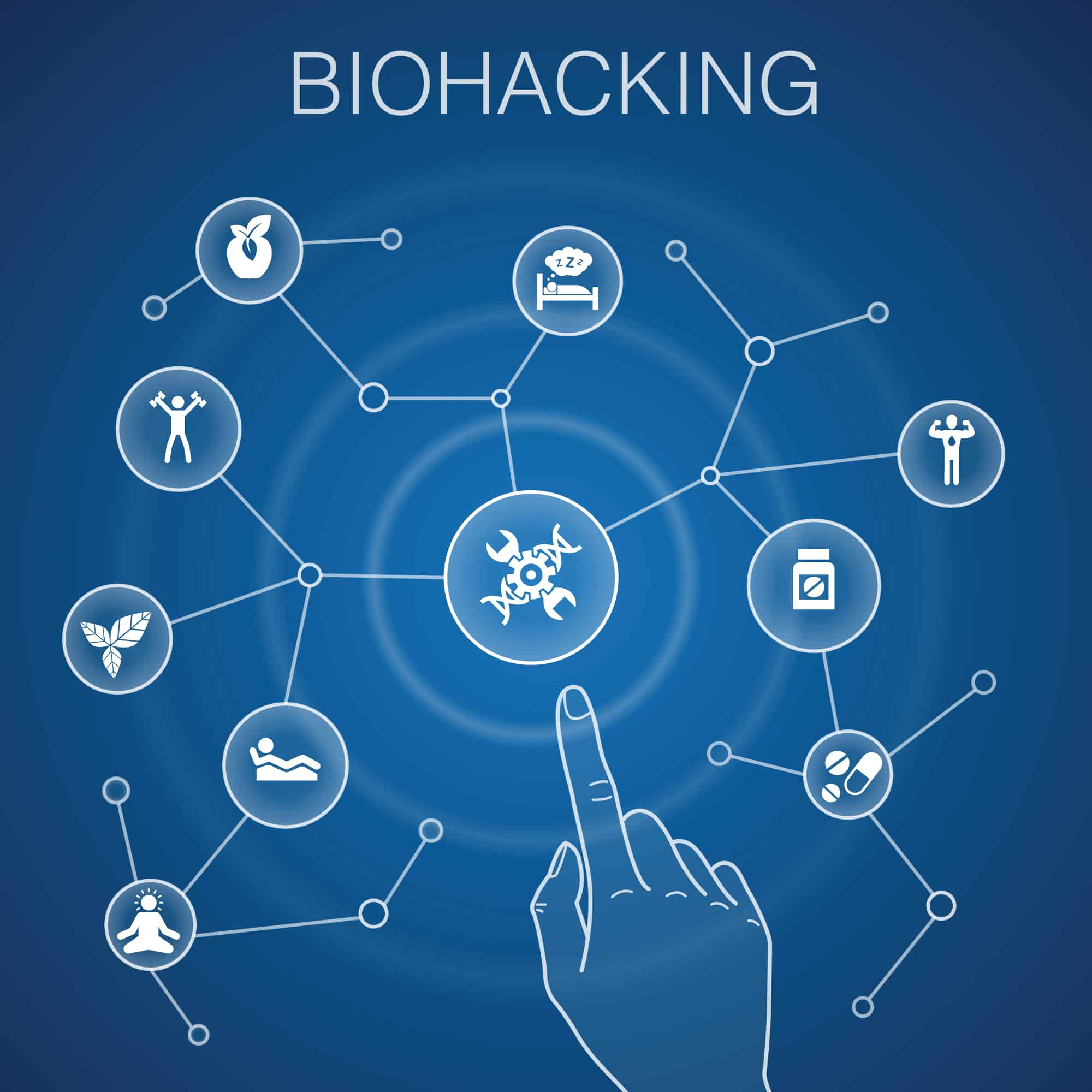What Is Biohacking? Inside the World of DIY Health Optimization

Introduction
In an age where technology, data, and science converge, a movement known as biohacking is gaining ground. Also referred to as DIY biology, It is a broad term for various lifestyle, nutritional, technological, and medical practices aimed at enhancing human performance, improving health, and extending lifespan—often outside conventional medical systems.
From intermittent fasting and cold therapy to implantable chips and nootropic supplements, biohacking is no longer a fringe trend. Celebrities like Joe Rogan, Elon Musk, and Dave Asprey have made it mainstream. But is it the future of personal wellness or a risky health fad?
What Exactly Is Biohacking?

Biohacking refers to a self-experimentation approach to optimizing physical, mental, and emotional well-being using a mix of:
- Nutrition
- Technology
- Data tracking
- Genetic testing
- Lifestyle modifications
Some people keep it simple—tracking sleep and trying different diets—while others take it to the extreme by injecting themselves with stem cells or implanting RFID chips under their skin.
The Three Types of Biohacking

- Nutritional and Lifestyle Biohacking
Focuses on diet, exercise, sleep, and natural interventions like:- Intermittent fasting
- Ketogenic diet
- Cold exposure (ice baths)
- Red light therapy
- Breathwork and meditation
- Tech-Enabled Biohacking
Utilizes devices and wearables for real-time data and control:- Smart rings, fitness trackers, and continuous glucose monitors
- Neurostimulation headsets
- Sleep tracking mats
- Blue-light-blocking glasses
- Biological/Grinder Biohacking
Involves modifying the body using implants or gene editing:- Nootropics (smart drugs)
- RFID/NFC chips
- CRISPR gene editing
- DIY stem cell therapy
The Philosophy Behind Biohacking
At its core, biohacking is about agency and experimentation—it empowers individuals to take control of their own biology. It challenges the traditional model where health is only monitored by doctors and accessed through prescriptions.
Biohackers believe:
- The body is a system that can be optimized like a machine.
- Data tracking leads to better decision-making.
- Personalized health beats generalized medical advice.
- You don’t need to be sick to improve your health.
Popular Biohacking Practices and Their Benefits
1. Intermittent Fasting
Alternating periods of eating and fasting (e.g., 16:8) helps:
- Improve insulin sensitivity
- Promote fat loss
- Enhance mental clarity
- Trigger autophagy (cellular cleanup)
2. Cold Exposure
Cold showers or ice baths are believed to:
- Reduce inflammation
- Boost mood and dopamine levels
- Improve metabolism
- Enhance immune response
3. Red Light Therapy
Using low-level red light to stimulate cellular energy:
- Speeds up muscle recovery
- Improves skin health
- Reduces joint pain
- Helps with sleep and mood disorders
4. Nootropics
Smart drugs or supplements to boost cognition:
- Caffeine + L-Theanine for focus
- Lion’s Mane mushroom for neurogenesis
- Modafinil (prescription) for wakefulness
5. Sleep Optimization
Using tech and habit changes to improve sleep:
- Blue light blocking glasses before bed
- Smart mattresses and sleep trackers
- Magnesium and melatonin supplements
- Sleep hygiene rituals like blackout curtains and cooling pillows
Biohacking Tools & Wearables
Modern biohackers love quantifying everything. Some popular gadgets include:
- Oura Ring – Tracks sleep, recovery, heart rate, and readiness.
- Whoop Band – Focuses on recovery and strain monitoring.
- Levels – A continuous glucose monitor for blood sugar control.
- Apollo Neuro – A wearable that uses vibration to reduce stress.
With real-time data, biohackers tweak variables (food, exercise, sleep) and watch their metrics improve.
Extreme Biohacking: Where It Gets Controversial
While many practices are safe and research-backed, some biohackers take it further:
1. Implantable Devices
Some grinders (a biohacking subculture) implant magnets, chips, and sensors into their bodies to unlock doors, store data, or connect with devices.
2. DIY Gene Therapy
Unregulated gene editing (using CRISPR kits) has been tested by biohackers at home—raising serious ethical and safety concerns.
3. Stem Cell Injections
Some opt for off-the-grid treatments like injecting stem cells to reverse aging, often without FDA approval or clinical evidence.
Is Biohacking Safe?
Not all biohacking practices are created equal. While many lifestyle hacks are low-risk, unregulated or extreme interventions can be dangerous.
Risks include:
- Nutrient deficiencies from prolonged fasting or restrictive diets
- Side effects from nootropics and supplements
- Injury from cold/heat exposure
- Infection or rejection from implants
- Misinformation from unverified sources
It’s essential to differentiate between science-backed strategies and pseudo-scientific hype. Always consult a medical professional before attempting anything extreme.
The Business of Biohacking
Biohacking is not just a trend—it’s a multi-billion-dollar industry. In 2025, the global biohacking market is expected to surpass $60 billion, driven by:
- Wellness startups offering longevity treatments
- Supplement companies targeting brain and body performance
- Wearable tech brands like Fitbit and Oura
- Online biohacking communities and influencers
India too is seeing a rise in urban biohackers, especially among fitness enthusiasts, tech workers, and entrepreneurs in cities like Bangalore, Mumbai, and Delhi.
Notable Figures in Biohacking
- Dave Asprey – Founder of Bulletproof Coffee, a pioneer in mainstream biohacking.
- Ben Greenfield – Author and coach focused on fitness-based biohacks.
- Josiah Zayner – Biochemist known for self-administering CRISPR gene editing.
These influencers share protocols, supplements, and data with large online audiences, further expanding the reach of biohacking.
How to Start Biohacking (Safely)
- Track Your Baseline
Use wearables to measure sleep, heart rate, or glucose. - Start with Lifestyle Changes
Try intermittent fasting, increase daily movement, and reduce screen time before bed. - Experiment Slowly
Introduce one biohack at a time and monitor results. - Educate Yourself
Read books like “Superhuman” by Dave Asprey or “Boundless” by Ben Greenfield. - Consult a Professional
Always get medical guidance, especially if you have a condition or take medications.
Future of Biohacking
As technology and science evolve, biohacking will likely merge with:
- Personalized medicine (based on your DNA, microbiome, and lifestyle)
- Longevity science (to delay aging)
- Neural implants (to boost memory or emotional regulation)
- AI coaches that guide your daily choices using biometric feedback
We’re entering an era where individuals will take full control of their health data and biology—with AI and biohacking as key tools.
Final Thoughts
Biohacking represents a powerful shift toward proactive, data-driven health optimization. While it holds great promise for mental clarity, physical performance, and longevity, it also comes with ethical, medical, and psychological implications.
Whether you’re a tech-savvy entrepreneur or someone looking to feel better and live longer, the biohacking lifestyle offers a spectrum of tools to explore. But remember: real optimization starts with balance, safety, and awareness, not extremes.











